
A special procession – just like 450 years ago
450 jaar
An extra-long procession with musical accompaniment will mark the beginning of the university’s 450th birthday celebrations on 7 February. Just like in 1575, a mixed group of academics, students and musicians will join the procession to Pieterskerk. And there will be many other special guests too. Come and see for yourself!
A standard-bearer and the beadles will lead a long procession of students and professors from the Academy Building to Pieterskerk and to mark this special anniversary, the Jong K&G marching band will join in, as will the rectors of all the other Dutch universities. Towards the front of the procession will be two school classes, from Leiden and The Hague, together with the professor who has taught them that morning. Everyone is welcome to watch this special cortège – which starts at 14.25 – from Rapenburg, Nonnenbrug or Kloksteeg.
The drastic cuts to research and teaching will not be forgotten during the celebrations. The red protest flag will hang from university buildings and anyone wishing to wear the red protest symbol is welcome to.
Live stream
The celebration of the Dies Natalis, the university’s foundation day, starts in Pieterskerk at 15.00. Leiden graduate Princess Beatrix will also attend the celebration. The programme will feature the Dies lecture on academic freedom, the conferral of three honorary doctorates and a performance by science rapper Jon Chase. And university historian Pieter Slaman will test the audience’s knowledge of the university in his 450 Quiz. The ceremony in Pieterskerk is fully booked but will be streamed live.
Route in 1575
The inaugural procession in 1575 took a longer route. After the service in Pieterskerk, the procession set off from the city hall on Breestraat, entering, via Hogewoerdsbrug, Steenschuur and ending at the Barbara Convent, the university’s first building, at the start of the Rapenburg canal.
Reconstructing the procession
Leiden’s Pieterskerk church is the historical spot where the university was officially inaugurated on 8 February 1575. Notes made by Jan van Hout, the first clerk at the university, tell us a lot about this special day. City historian Jan Jansz. Orlers used these precise notes in the 17th century to reconstruct the inaugural procession. And with a nod to both gentlemen, historian Willem Otterspeer produced a vivid description of the university’s foundation day in his book ‘Groepsportret met dame. Het bolwerk van de vrijheid’. Below are a few abbreviated sections from this book on the university’s inception in the destitute Leiden of 1575.
-
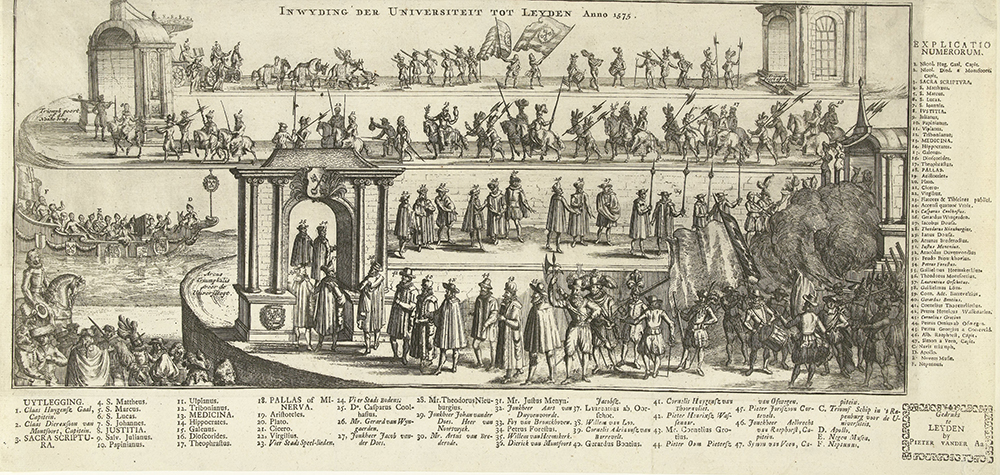
Print: Procession at the Foundation of Leiden University, 1575 (anonymous, 1779 -1781). UBL collection -
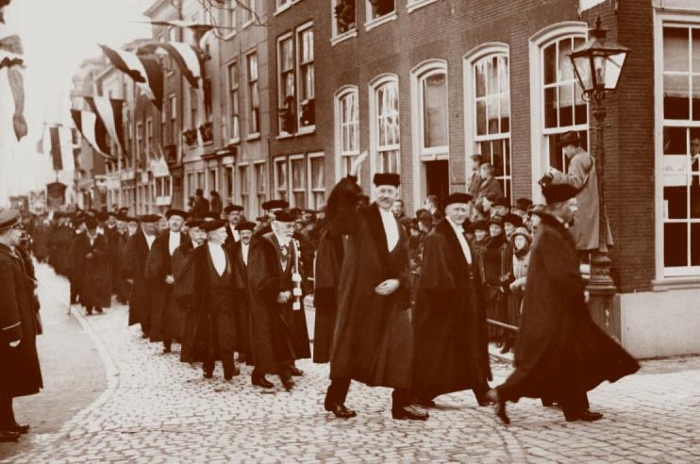
The cortège in 1925, on the university’s 350th anniversary. Photo: Rijksmuseum Boerhaave -
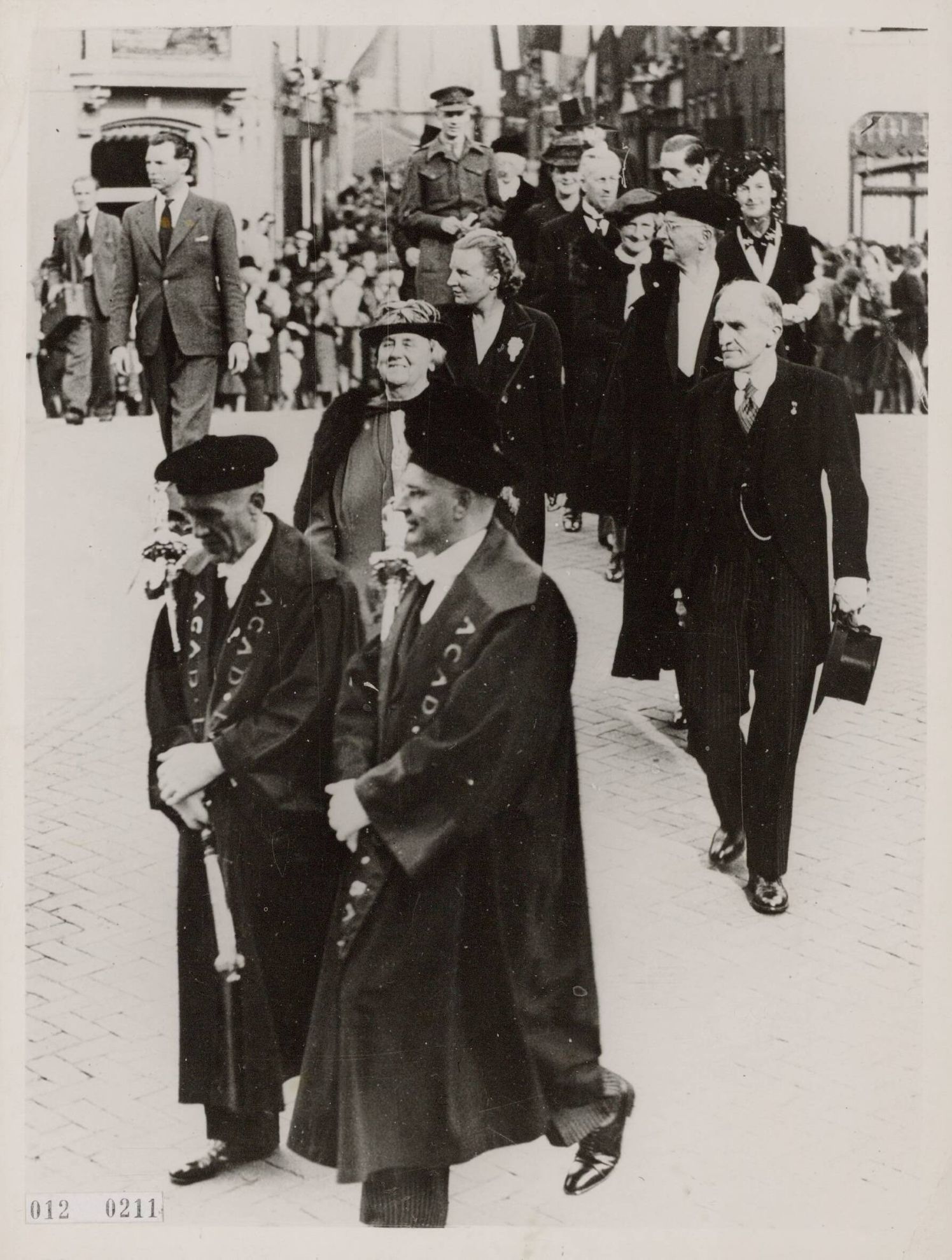
The cortège on 17 September 1945, at the reopening of the university. With Prof. Rudolph Cleveringa, Queen Wilhelmina and Princess Juliana. Photo: National Archives -
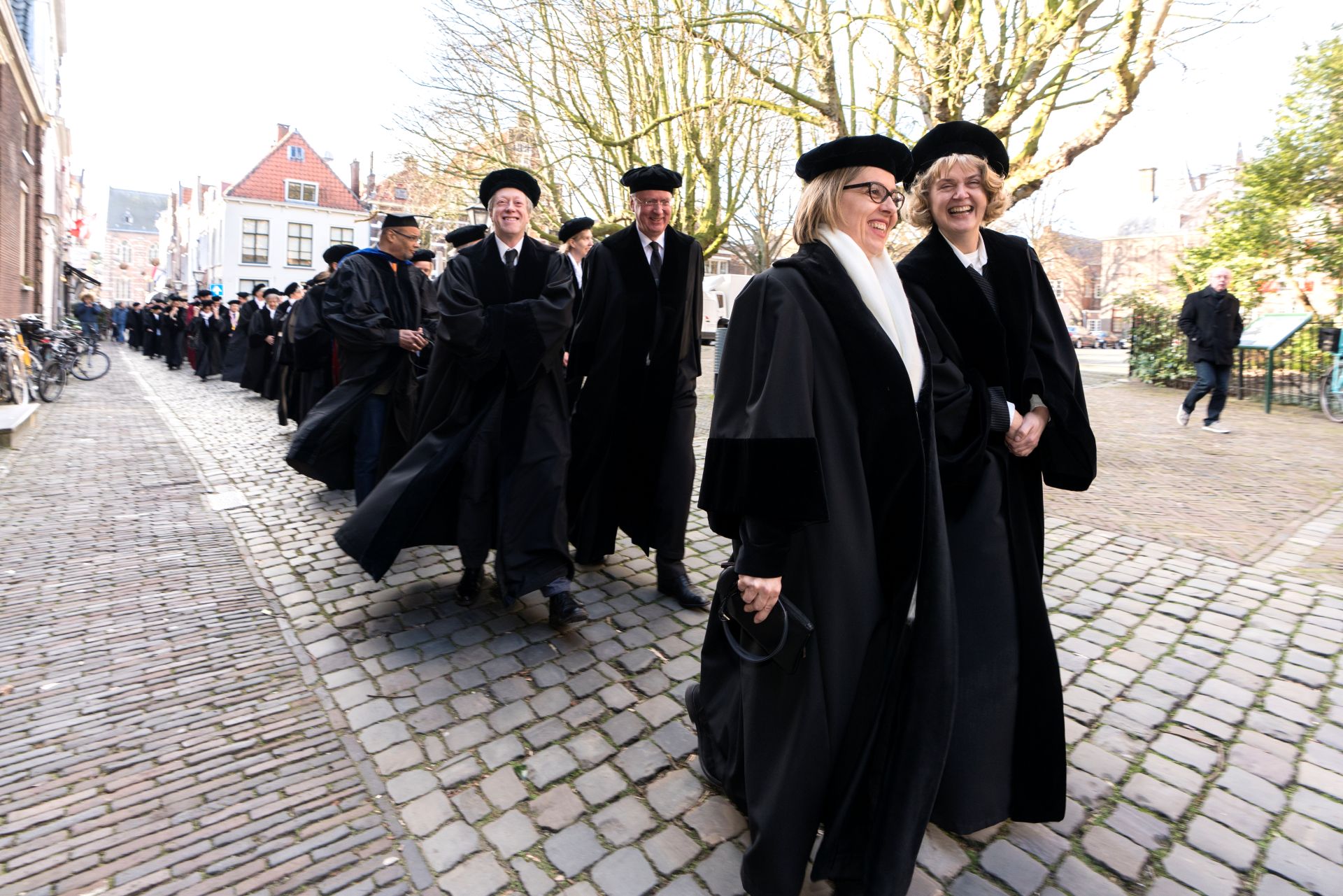
The cortège in 2018. Photo: Hielco Kuipers -
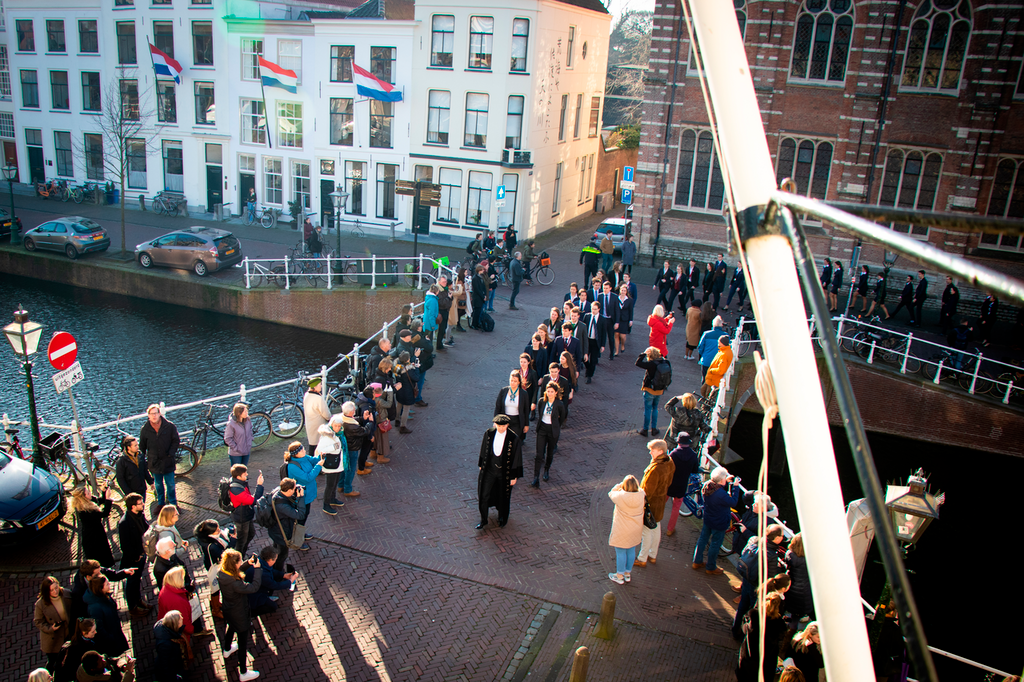
Students also join the cortège, as here in 2019. Photo: Sean van der Steen -
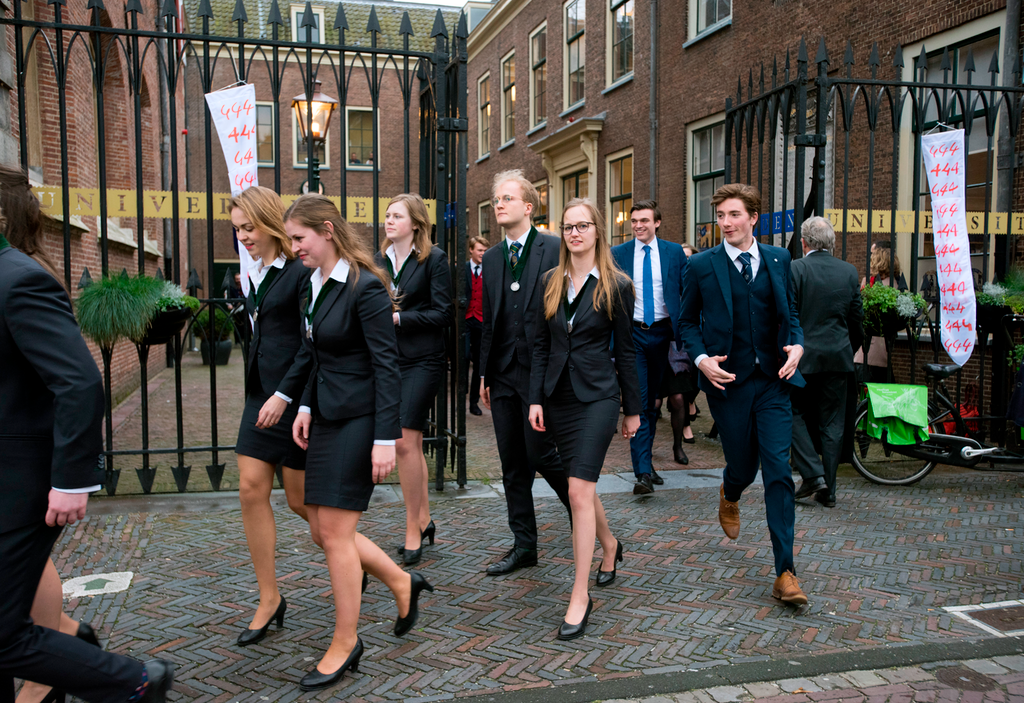
-
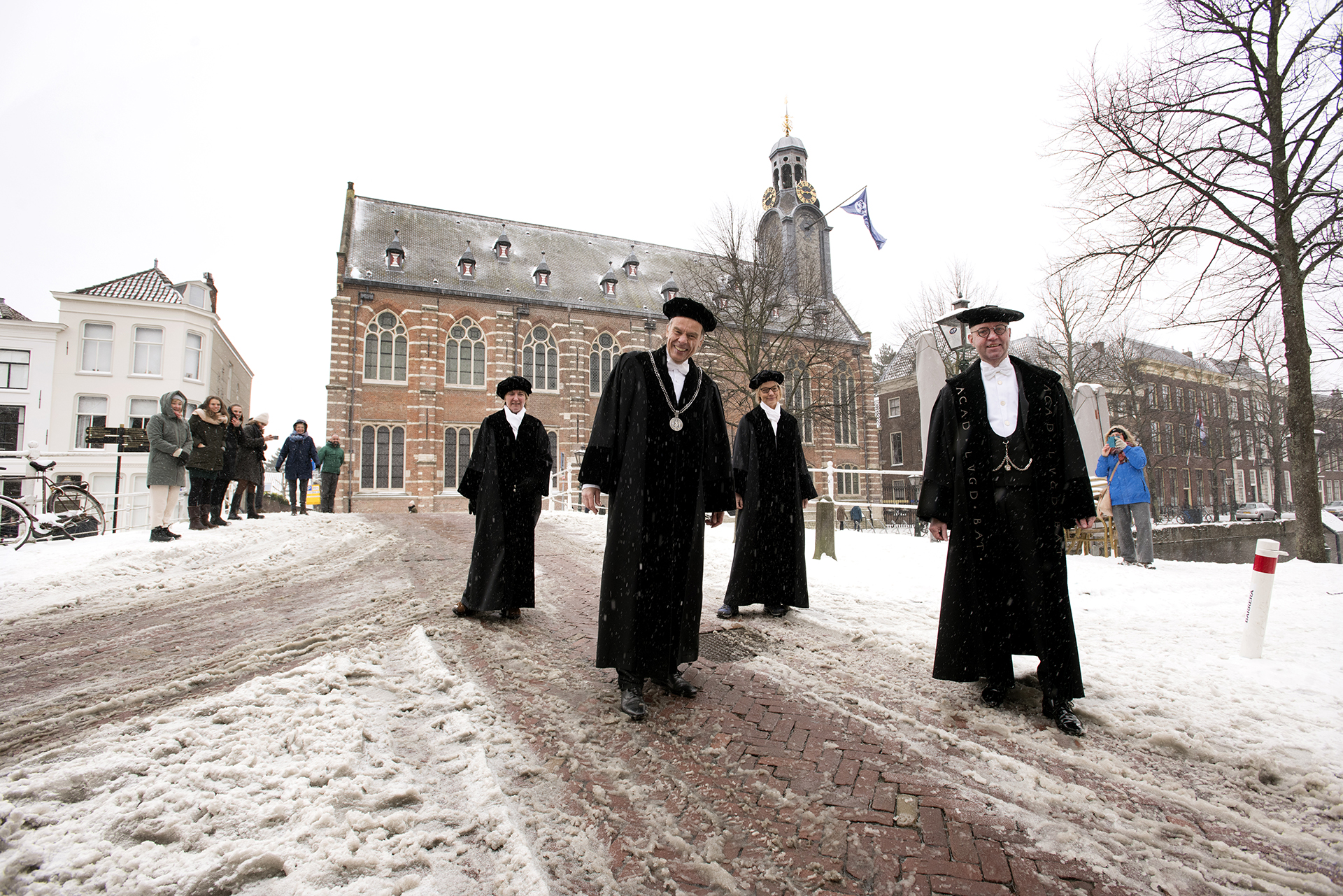
A mini cortège in 2021, during the pandemic. Photo: Marc de Haan
Cold Pieterskerk
‘It must have been cold and dark that Tuesday 8 February 1575. At seven in the morning the large Pieterskerk, stripped of its ornamentation by a blasphemous mob in 1566, filled with a crowd of people (...) The church must have been packed to the rafters. The municipal council had ordered everyone in the city, poorter or stranger, to lay down their tools and attend the church service.’
Streets strewn with olive leaves
‘The council had also instructed anyone who owned a house along a specific, well-defined route in the city to level the streets, remove obstacles and clear away debris. On the day itself, they should open their houses and adorn them with rugs and strew the streets with bay and olive leaves. It was along these streets that the foundation procession for Leiden University would march after the church service.’
Medicina with pisse-pot
‘The pièce de résistance of the procession was the allegorical section. Leading this section was the only float, bearing Sacra Scriptura – the holy scripture – a woman in a simple white dress beneath a round canopy. She was accompanied on foot by the evangelists Matthew, Mark, Luke and John. Then, on horseback, came a blindfolded Justitia, bearing her scales and sword (...) She was followed by Medicina, also on horseback, with a medicine book and herbs, and if the print is to be believed, a pisse-pot in her hand (...) And finally Minerva, in an ensemble that had taken a lot of work. Her cuirass was of starched fabric; Medusa was painted on her wooden shield. This part of the procession was embellished with footmen and halberdiers.’
Improvised professors
‘Then came the dignitaries and the professors. At the front was church minister Caspar Coolhaes, who had agreed to give some theology lectures (...) They were followed by lawyers, physicians and philosophers, each of whom had promised to give a few lessons in their discipline. Each of these provisional professors was flanked by dignitaries from the city and the States of Holland, including Jan van der Does, the first governor of the university.’
Otterspeer concludes the description by commenting that it was ‘a beautiful yet somewhat strange day’ in the poverty-stricken Leiden, which had only been liberated from the Spanish on 3 October 1574. ‘Such a procession was not a celebration for celebration’s sake but a statement of principle about what the university aspired to be’, says Otterspeer.
Back to the present: the university is returning to its roots with an extra-long procession and a ceremony in Pieterskerk on Friday 7 February. Join us as we look back over the past 450 years and ahead to the next ones.
William of Orange founded Leiden University in 1575 – making it the oldest university in the Netherlands. In 2025 the university is celebrating its anniversary with the theme ‘Ahead of the times’. See the full jubilee programme at universiteitleiden.nl/450
